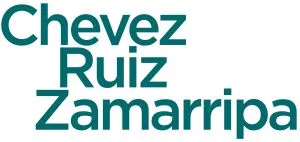Prior to 1978, family business consultants, advisors, and lawyers in Mexico and worldwide, counseled family-owned businesses by analyzing the targeted family and their business as two overlapping systems. Their conclusions brought to the family would often lead to disappointment since family needs would not always align with business needs and, reciprocally, business demands implied taking hard decisions that lead to family friction. While legal, tax and administrative solutions for wealth management are becoming increasingly creative, conflicts of interest that naturally arise within family businesses have prevailed.1
After several attempts to understand the multiple perspectives within a family business, Renato Tagiuri and John Davis at Harvard Business School identified a third and key pilar, ownership. Independently and overlapping the ownership circle to each of the family and business circles, when accordingly, they created a Three-Circle Model to understanding family business systems. The model identifies where people stand within a family business, in accordance with the following possibilities: (i) family members not involved in the business, but who are still considered family; (ii) family owners not employed in the business; (iii) non-family owners who do not work in the business; (iv) non-family owners who work in the business; (v) non-family employees; (vi) family members who work in the business but are not owners; and (vii) family owners who work in the business.
Each group has its own targets, opinions, priorities, and background, and successfully identifying them is a key component for wealth management involving family businesses. Where the individual is standing within the model will illustrate where his or her concerns come from. This model doesn't only legitimate concerns, but it integrates them as a whole in order to prioritize and resolve them.2
One might think the Three-Circle Model only works for traditional small family-owned businesses, but it is still influential in wealth management for the ownership of bigger companies. In The World's Top 750 Family Businesses Ranking published in 2020, family-owned businesses where ranked based on their 2019 revenues including employee numbers, market capitalization, sector, region, and year of foundation. This showed an overview of the huge economic impact that family-based companies have worldwide and region wide. In countries such as Mexico, these companies are crucial in the country's economy, contributing to local development and representing a main source of employment. Ranked number 31, América Móvil, S.A.B. de C.V. is the first Mexican company in the list with a revenue for 2019 of $53,408.2 billion dollars. Number 139 on the list is Grupo Bimbo, S.A.B. de C.V. and the third Mexican company ranked is Alfa, S.A.B. de C.V. Among the 750 worldwide family-controlled companies, Mexican public listed companies Grupo México, S.A.B. de C.V. and Cemex, S.A.B. de C.V., also appear on the list. Several other Mexican renowned companies on the list include Arca Continental, S.A.B. de C.V., Grupo Comercial Chedraui, S.A.B. de C.V., Grupo Elektra, S.A.B. de C.V., and Grupo Carso, S.A.B. de C.V., being Grupo Bal, S.A. de C.V. the top-ranked Mexican private company.3These Mexican family-owned businesses and many others are expected to continue to thrive, portraying a clear example that an effective wealth management can make a family business successful.
Recognizing that no one can be in more than one area is essential in the Three-Circle Model and thus explains why the model has overlapping zones. Challenges within family businesses often arise from not having clearly identified roles and positions, lacking delimitation to where and when certain people can step-in, and when the checks and balances within the business are not sorted out. Where all three circles meet is a concentrated important role within the family business. It is the area for family members with ownership who are also employees. Jet Airways for example, a Mumbai family-owned and controlled airline company, was successful for nearly 25 years until it went bankrupt and was forced into suspending all of its operations. An inefficient wealth management resulted in an overburden of debts holding back payments of loans, lease rentals and salaries, and the loss of 20,000 jobs. Naresh Goyal's goal as founder and chairman of Jet Airways was to initially keep control of the airline at any cost, turning down deals that could have saved the business. Goyal took charge of all decision-making, handled all operations. Major decision-making authorities fell back on limited individuals, and the board acted like a yes-man system.4 These mistakes would have been easily avoided considering the Three-Circle Model of the Family Business System in Jet Airways' wealth management.
In Jet Airways' bankruptcy, India's macroeconomic conditions such as the Rupee's depreciation, fuel prices and elevated costs weighed heavily. The economic recession of 2018 affected a lot of India's companies, and yet a lot of them recovered subsequently.5 External factors are decisive in wealth management, and it is crucial to consider the country where such business is centered and where the family members reside for tax matters, as well as the country's legislation and economic stability. A beneficial approach to protect the financial independence of family members within a family business could be to consider changing tax residence for some of the family members. If foreign countries have, for example, high taxation schemes, having a residence for tax purposes in another territory, or having dual tax residency, could be used to reduce income taxes and take advantage of a more favorable tax treaty between such countries. The provisions contained in Double Taxation Avoidance Agreements entered into by Mexico and the country of which the individual is a tax resident, could be favorable to determine whether the benefits of the treaty could be applied in relation to income obtained abroad by such family member. There are many advantages to enter the Mexican markets when family-businesses continue to grow, but also considering Mexico when establishing a wealth management strategy can also be beneficial. There are no currency restrictions in Mexico, permitting the purchase and export of foreign currency with no limitations for capital investments, contributions, and repatriations, that come along with additional favorable tax provisions. Mexican fiscal laws contain many exceptions that may result in the possibility to reduce or eliminate capital gains taxes. As per today, there is no specific inheritance, estate or gift tax in Mexico, being a great advantage for family-owned businesses that are based on family values and belief systems and meant to be passed down generation to generation.
Establishing guidelines and family protocols that set rules in the handover and transfer from generation to generation in each area of the Three-Circle Model should also be part of wealth management planning, as these companies are intended to remain family-owned, especially in countries like Mexico where "Mexican entrepreneurs represent more than 90 per cent of the firms listed on the Mexican stock exchange, and many of the top-performers are oligarchical, generations-old (..)" (McCabe, 2021).6 Family is the core of these businesses, sometimes beneficial for reputational and marketing means, and if it is correctly passed-down with its protocols and guidelines with models like this where family adapts and systematically overlaps with the company's needs, the results will be long-lasting family-businesses. The Three-Circle Model also plays a significant role when implementing successful strategies such as corporate governance. Walter Vieira and Mita Dixit in The 5Gs of Family Business state that for a family-controlled business to maintain harmony and equilibrium, clear guidelines and policies, roles, and accountability in the organization within the family is mandatory. Only a successful governance mechanism will ensure that the individuals in these seven sectors interact and support each other to keep family business affective and productive.7 As family businesses expand, it will no longer be the founders and family members responsibility to teach the culture of governance, but it will become a responsibility for boards of directors to implement and monitor such governance guidelines to increase transparency and accountability.
Nearly fifty years later, the Three-Circle Model of the Family Business System should still be a strategy framework in every wealth management - but a few factors must be kept in mind for it to be a realistic and successful tool to come up with the right solutions. As the word itself implies, it is a model; and a model must never be rigid. The family circle doesn't necessarily imply direct blood family, each family has a different meaning to what family itself is. The ownership circle can imply indirect ownership within family businesses. As for the business circle, it can bring on different appreciations to what non-family employees mean and if it includes the provision of services. The three circles are always in motion, and an effective wealth management plan should anticipate their rotation and future challenges. Finally, everyone's role within the model should never be set in stone. As family businesses in Mexico and worldwide change and families grow, it shall be necessary to redesign the positions of where everyone fits, and consequently analyze if each groups' motivations, internal relationships, resources, and needs are still the same. 8
Footnotes
1. Who's in Charge? A new model for understanding family business ownership. Patricia Angus, February 22, 2019. (The New Family Business Ownership Model (wealthmanagement.com)).
2. How Three Circles Changed the Way We Understand Family Business. Cambridge Family Enterprise Press, 2018. Published in John. A. Davis' website. (How Three Circles Changed the Way We Understand Family Business | John Davis)
3. The World's Top 750 Family Businesses Ranking, as published in Family Capital on March 3rd, 2020. North Mews Publishing Limited.
4. Sustainable Entrepreneurship: Innovations and Transformation. Ajoy Kumar Dey. Bloomsbury Publishing India Pvt. Ltd. Bimtech, 2021.
5. IBIDEM.
6. Mexico's Five Most Profitable Family Businesses. Published online in Tarawat Magazine, January 11th, 2021.
7. The 5Gs of Family Business: Genesis, Growth, Gen-next, Governance and Giving Back. Walter Vieira Mita Dixit, January 17, 2019.
8. IBIDEM.
Originally published by The Legal 500.
The content of this article is intended to provide a general guide to the subject matter. Specialist advice should be sought about your specific circumstances.




